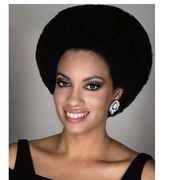#73: Wednesday, September 15, 2021
“Ave Maria” by B. E. Boykin
SSAA, a cappella
 I wrote about a different work by composer Brittney Boykin in December 2020, and have been interested in her work ever since. (You can read that blog here.) I have recently been perusing her catalog for multi-part a cappella rep, and her Ave Maria caught my attention. Thank you again to Dr. Marques L.A. Garrett for introducing me to Boykin’s work.
I wrote about a different work by composer Brittney Boykin in December 2020, and have been interested in her work ever since. (You can read that blog here.) I have recently been perusing her catalog for multi-part a cappella rep, and her Ave Maria caught my attention. Thank you again to Dr. Marques L.A. Garrett for introducing me to Boykin’s work.
Boykin self-publishes through Klavia Press, so while some of her music may be findable at larger retailers, that is not her entire catalog. Be sure to visit her publishing site to look at all her rep options, and her website to learn more about her as a composer, conductor, and pianist.
In my current fall concert, I have uptempo, I have rhythmically challenging, I have polyphonic, I have non-English/Latin language rep. But my students also desperately crave crunchy harmonies. Bonus if the crunchy harmonies are readable in diatonic solfege, and not chromatic, since that’s where they are right now. Plus I wanted something with sweeping lines where we could work on tone and phrasing, after all this time singing separately. Boykin’s Ave Maria is perfect.
The piece is in simple meter 3/4 with no rhythms more complex than beat division. No subdivisions/16ths, no syncopation, no borrowed. And all the parts move together. So, no conflicting rhythmic patterns or entrances to chase. The work is marked “reflectively” and the rhythmic structure supports that fully. The text is very much tied to the rhythms, which leaves great opportunity for discussion of text stress. In this era of masked and distanced singing, text can sometimes get lost, even with the best diction. I especially appreciate how the text setting kept the text legible to the audience.
From a tonal perspective, the piece begins with a listed key of D Major, but doesn’t come to a full D major chord until the final measure. The opening frequently skirts the relative minor, b, but it never quite settles there either. There are lots of diatonic triads with one added pitch, usually a second apart from another pitch. This fulfills my students’ desire for something “crunchy”, but as it is all diatonic, they can still learn their lines by section on solfege. There are two non-diatonic notes in the whole selection – a te and a si.
Flowing 4 bar phrases keep the piece heading forward (and keep it singable in masks, if we’re being honest!). But the building of each phrase also gently pushes the ensemble to breathe together, shape together, move together. Especially for choirs that have not been able to sing together in person for while, this is a key component of what I know I need to work on this fall. And having those crunchy harmonies paired with lush phrases? Exquisite.
There are so many struggles this fall season with trying to find some way back towards “normal” in terms of singing and ensembles. But repertoire like this, which easily engages students harmonically, vocally, and tonally – without also simultaneously pushing them rhythmically or polyphonically – is just the niche I needed to round out my fall concert. I hope you enjoy the piece as much as I have been!
| Title: | Ave Maria |
| Composer: | B.E. Boykin http://www.beboykin.com |
| Text Source: | Marian antiphon, Roman Catholic liturgical tradition |
| Language: | Latin |
| Listed Voicing: | SSAA |
| Ranges: | S1: E4-G5 S2: C#4-E5 A1: A3-A4 A2: F#3-F#4 |
| Accompaniment: | A cappella |
| Publisher: | https://www.klaviapress.com/ |
Until next month!
-Shelbie Wahl-Fouts
Dr. Shelbie Wahl-Fouts is Director of Choral Activities and associate professor of music at Hollins University, a women’s college in Roanoke, Virginia.
Email:
Bio: https://www.hollins.edu/directory/shelbie-wahl-fouts/
For a listing of all current and past blog entries by this author, click here.
For a spreadsheet of all blog posts and their repertoire, click here.


Leave a Reply
You must be logged in to post a comment.